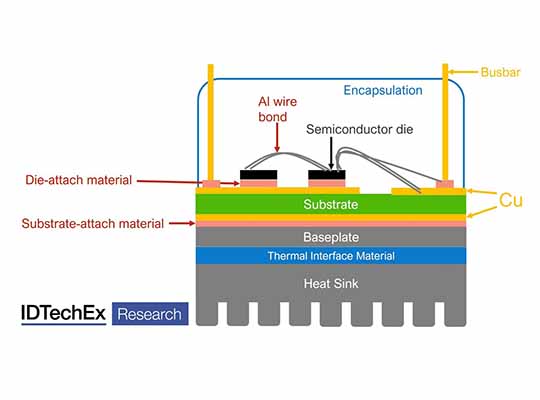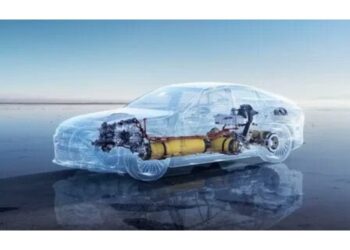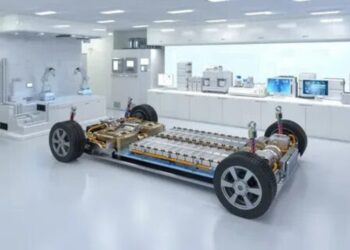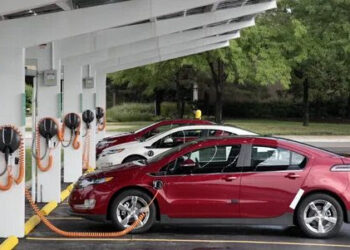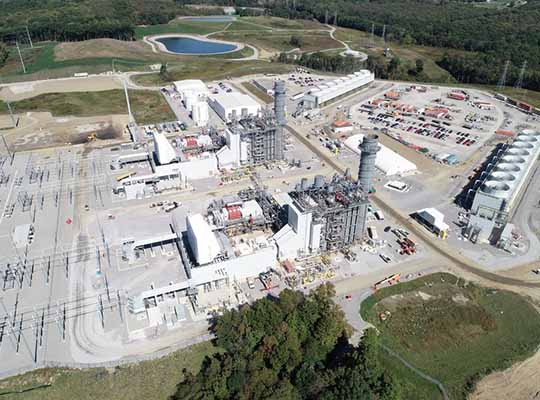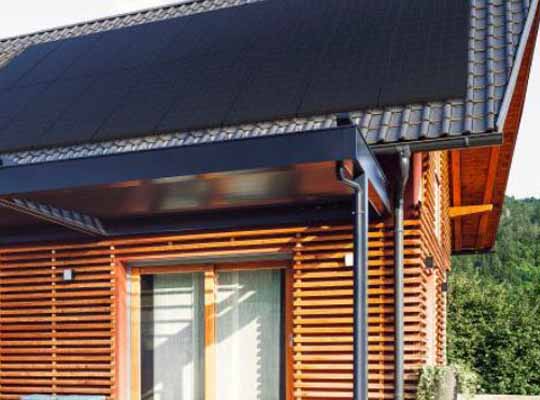BOSTON – For electric vehicles (EVs), efficiency is the name of the game. There are many avenues to improving efficiency, especially within the drivetrain with one of the key areas being power electronics. Of these components, the main inverter is the highest power and gives the best opportunity for efficiency improvements. The main inverter is responsible for converting the DC output of the battery into an AC input for the electric motor. In the past few years, we have started to see wide bandgap semiconductors such as silicon carbide (SiC) adopted in EV inverters to replace the typical silicon insulated-gate bipolar transistors (Si IGBTs). The use of SiC enables higher density power modules that can operate at higher temperatures, leading to new thermal management and material opportunities for EV power electronics.
The SiC Transition
Despite the increased cost of SiC metal-oxide-semiconductor field-effect transistors (MOSFETs), their penetration into the EV market has been substantial. According to IDTechEx research, in 2020, SiC MOSFET inverters made up nearly 30% of the EV market globally. Tesla started the trend in 2018, with others like BYD have vehicles on the road. Giants like Stellantis and Hyundai are including SiC power electronics in incoming models to help enable their high voltage (800 V) platforms. IDTechEx’s new report on “Power Electronics for Electric Vehicles 2022-2032” considers the transition to SiC in addition to deep analysis of power electronics for the EV market with examples from EV models, the supply chain, and package materials and innovations.
Thermal Management Challenges
Power electronics in EVs present interesting thermal management challenges and the adoption of SiC changes several aspects of the module and package design along with material selection. In a traditional power electronics package, several potential failure points occur with thermal cycling. As the package heats up and cools down, the mismatch in thermal expansion between materials causes degradation of various connections, these include the wire bonds, die-attach, and substrate-attach. In SiC packages, power density and operating temperature can be increased significantly, meaning that certain traditional options are no longer suitable.
Today, aluminum wire bonds are the dominant interconnect technology, however, these are a common failure point. This has led to more use of wire bonding with aluminum alloys, copper, or even direct lead bonding. Die-attach materials are also critical. This would typically be done with a traditional solder, but with higher operating temperatures (especially for SiC), normal SAC (tin-silver-copper) solder can be unreliable leading to the emergence of alternatives like silver sintering to provide much better thermal cycling performance. Tesla’s package from STMicroelectronics utilizes a combination of copper ribbon bonds and aluminum wire bonds with silver sintering for its die-attach. Very much embracing these emerging alternative technologies. As we continue, we are sure to see further adoption of these options in inverter packages to enable higher reliability in smaller form factors with higher efficiency.
At a larger scale, much like many EV batteries, EV power electronics tend to be liquid-cooled. Typically, the coolant is passed through the fins of the heat sink under the module. Whilst this section of the power electronics thermal management may not be as innovative as emerging materials within the package, it still presents interesting opportunities for integration across the vehicle. Many vehicles use the same coolant path through the power electronics and electric motor. For example, in certain models, waste heat can be scavenged from the drivetrain for use in heating the cabin, helping to reduce losses and improve overall vehicle range, especially in cold conditions.
The evolution of power electronics, especially towards wide bandgap semiconductors is transforming the thermal management and hence material landscape within EV power electronics. IDTechEx‘s “Thermal Management for Electric Vehicles 2021-2031” report covers several use-cases within EV power electronics packages as well as investigating the trends around options for wire bonds, die-attach, and substrate materials. In addition to power electronics, the report takes a deep dive into the thermal management strategies across the batteries, motors, and power electronics including market forecasts through to 2031.


